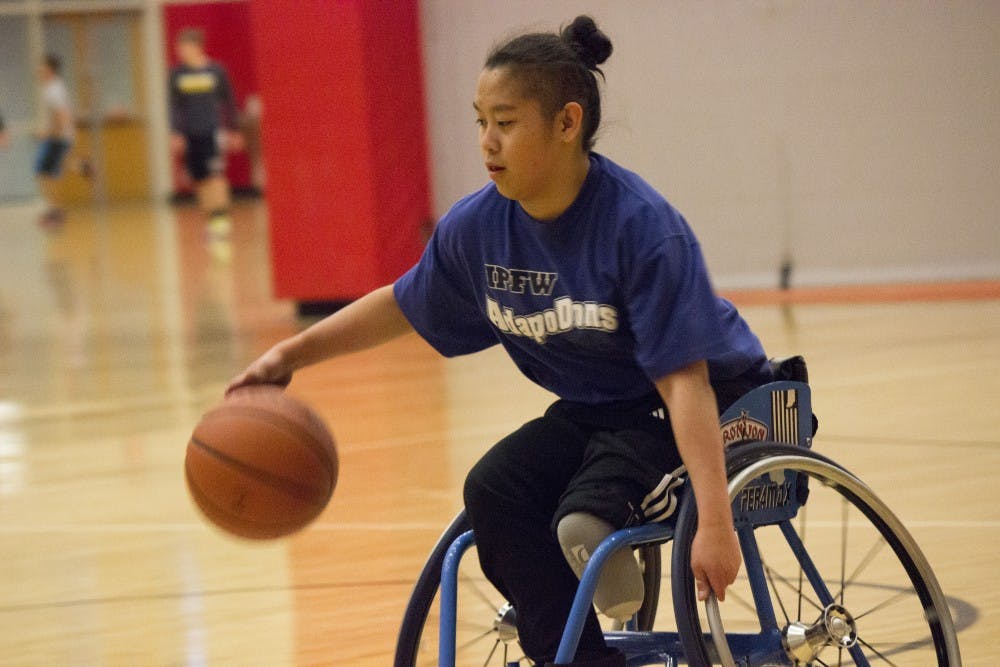When second year graduate student Emmy Kaiser came to Ball State, she noticed the wheelchair equipment in the Student Recreation and Wellness Center. The top-20 U.S. Paralympic tennis player decided to put it to good use.
With the help of a faculty adviser, she started the wheelchair basketball team three semesters ago. While she had never played basketball before, and still isn’t comfortable shooting, she said she enjoys helping out teammates with their chair skills.
She is one of two players who uses a wheelchair in daily life, so the learning curve is steep for most of the team.
“The chair skills are so important, it has to be second nature,” Kaiser said. “The main difference [between stand-up basketball and wheelchair basketball] is they have to understand the chair is part of their body.”
For example, she said if players were shooting, their chair had to be facing the basket and they can’t shoot when they’re moving, unless they are experienced.
Kaiser said since basketball is one of the few sports seen on TV for Paralympic sports, people are exposed to it more and some want to come try.
On Monday night, the wheelchair basketball team played a scrimmage against the IPFW AdaptoDons. The Ball State group practices every Monday night, but hadn’t previously played against anyone.
Sarah Sims, one of the students who helps run the team, said the scrimmage was to give the team more experience in a game.
“Our guys were interested in getting a feel for a real game, so we wanted to bring in some more players that really knew how to play,” she said.
Kaiser said she liked how they had mostly able-bodied students playing so they could see what her life is like.
“In the United States, [Paralympic athletes] are not seen as pro-athletes,” Kaiser said. “It’s good seeing guys our age seeing this side of it. I think this generation is more open to it.”
Before Kaiser, Ball State hasn’t had a wheelchair team in 20 years.
The sport began in 1948 after World War II veterans started coming back from overseas, according to the National Wheelchair Basketball Association’s website. Since many of them were paralyzed, they started trying sports like pingpong, bowling and basketball. Wheelchair basketball is the top played wheelchair sport.
C.J. Conger, a freshman architecture major, said he has played basketball for his whole life and he wanted to switch it up and do something more challenging.
“I like being at a disadvantage and having to find a way to keep up with it,” he said.
Conger said playing in a wheelchair used a lot of mental strength — especially since he had never been in a wheelchair before.
“I have to figure out how to work the chair and play in the chair,” he said. “Here, it doesn’t matter how fast you are on your feet.”
Tim Leonard, the captain for the IPFW AdaptoDons, said it was great to see another school that was adding adaptive sports. This is IPFW’s second year with a team.
“In the society we’re in now, colleges are trying to find new ways to make everyone equal and adaptive sports are the next wave,” he said. “It’s important that schools see there is a need for [adaptive sports].”





